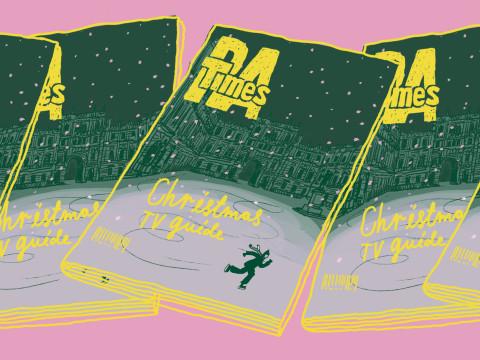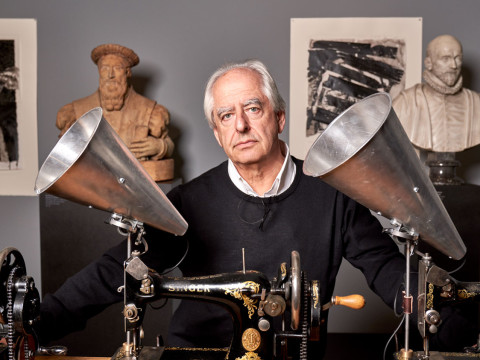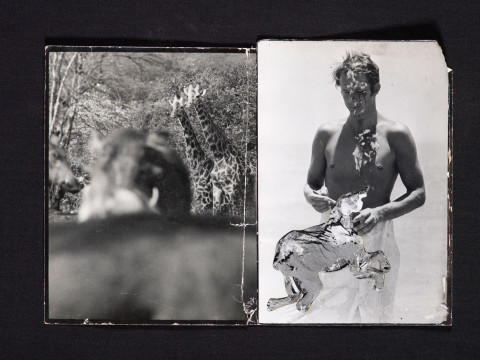
13 things to know about Francis Bacon
By Michelle Doyle
Published on 14 February 2022
Think you know Bacon? Here’s our guide to the life of the 20th-century master.
Like his paintings, Francis Bacon was a complicated and contradictory figure. He led a remarkable life that was full of highs and lows, from his difficult teenager years when he was kicked out of the family home, to his career as an acclaimed artist who put figurative painting back on the agenda. Here, we try to unpick who Bacon was. Who he really was.

1. He started out as a furniture designer
Despite never going to art school – or finishing school for that matter – Bacon painted his first major work, Crucifixion (1933) aged just 24.
By that time though, he had already lived in Berlin and Paris, considered working as an actor, and established himself as a furniture designer in London.
To this day no one knows for sure where he learnt to make furniture (Paris, perhaps?), but he was successful enough to secure splashy magazine features for his glass and chrome-plated pieces. His work was reminiscent of Eileen Gray, Le Corbusier and Marcel Breuer.

2. He revelled in chaos
Bacon’s Reece Mews studio (since relocated to Dublin) is the manifestation of chaos.
By the time he died, his studio floor was feet-deep in thousands of photographs and magazines – a mix of high and low cultural images, historic paintings, scientific drawings and photographs as well as reproductions of his own work – which he described as "compost".
These images are embedded in his paintings, from subtle hints, to direct references to the Old Masters, news and current events.
Since Bacon's death, his studio has gone on to inspire others too. In 2019, the team at fashion house, Alexander McQueen, replicated the paint splodges on Bacon's studio door in their spring/summer campaign.

3. He loved... and he lost
Bacon felt as though he was followed by death, particularly in his love life.
His partner Peter Lacy died of alcoholism in 1962, aged 46, while his subsequent partner, George Dyer, died of an overdose in 1971.
Both relationships were tumultuous (and in Lacy’s case, extremely violent; he once threw Bacon out a window), and both passed away just days before the openings of major exhibitions of Bacon’s work in London and Paris.
These tragedies had a profound impact on the artist and ultimately led him to produce some of his most famous artworks.
We are all animals if you care to think about it. It’s just that some people are more aware of the fact than others.
Francis Bacon

4. He was allergic to animals
Bacon was fascinated by animals (over his career he painted monkeys, baboons, chimpanzees, dogs, owls, bulls, elephants, rhinos) but he was effectively allergic to most of them.
Dogs and horses were a trigger for his asthma and although he painted dogs, horses are notably absent in his work. In fact, Bacon once hired a dog from Harrods the night before a medical exam to make it clear he was asthmatic in order to avoid conscription.
Bacon's fascination with animals is especially strong in Study for Chimpanzee (1957; left) which resembles a portrait and shows the chimp as a thinking, feeling creature who's full of character.

5. He liked to splash the cash
Bacon was a hugely successful artist in his lifetime and he certainly enjoyed the finer things. But in spite of his wealth, he lived quite modestly. His Reece Mews flat where he lived and worked for over 30 years, from 1961, was a humble studio tucked away near South Kensington tube station.
Bacon liked to spend big on dinners and champagne, and he took a nihilistic attitude to money, gambling and extreme spending. But he was also extremely generous. He often used his wealth to take care of family, friends and people who had shown him kindness, and even went as far as to pay his friends’ medical bills.

6. He knew Ronnie and Reggie Kray
Despite living most of his life in London, Bacon met the Kray Brothers (London’s most notorious gangsters) in Tangier. They were predictably nothing but trouble, and even arranged for a lackey to break into his studio to rob and flog his paintings. The twins often made unannounced social calls as Bacon reminisced:
“You never knew when [the Krays] would turn up… I went back to the studio in the afternoon and I found them all there, the whole gang, just sitting around, and Ronnie [Kray], the one they called mad and bad, saying how long it had been and how nice it was to see me. Of course I didn’t know what to do. It sounds absurd but all I could think to do was to ask them if they’d like a cup of tea.”

7. He loved cinema
Berlin as a teenager was Bacon’s first overwhelming cultural experience. He savoured its opulence (experienced at first hand in the Hotel Adlon), and its squalor, felt in the poverty of the surrounding streets. The erotic life of the city was startlingly uninhibited and artistically it thrived with new developments in architecture, painting and cinema. It may have been in Berlin that Bacon first saw Battleship Potemkin (1925) by the Soviet filmmaker, Sergei Eisenstein. Its full impact would not surface for several decades.
Although Bacon was influenced by cinema, his work has also influenced cinematographers. The xenomorph in Ridley Scott's Alien (1979) was inspired by Bacon's Three Studies for Figures at the Base of a Crucifixion (1944) while David Lynch's films borrow from Bacon’s paintings.

8. He declined to join our club
We wrote to Bacon in 1985, asking him to become a Royal Academician. This is what he replied:
“I am afraid I must refuse. I belong to nothing and feel I am too old to start now but thank you very much for the suggestion.”
We’re not still bitter about it or anything...
I belong to nothing and feel I am too old to start now.
Francis Bacon

9. He didn’t believe in God – but obsessed over the crucifixion
Bacon’s work is preoccupied with religious symbolism. Figure Study II (1945; left) was one of a group of paintings described at the time they were made by Bacon as “studies for the Magdalene” – who often appeared as a witness to the crucifixion in historic Christian paintings.
Here, amidst the trappings of civilised society (an umbrella, herringbone coat and potted plant) a hunched figure looks outward and howls. Bacon later aligned these figures with the ‘Furies’, creatures of judgement and vengeance from Ancient Greek myth.
Bacon’s interest and cynicism in religious iconography was clear from the start. His first important work, Crucifixion (1933), spoke less of religion and more of Bacon’s world view that humankind is fundamentally an animal, that “we are all meat, we are all potential carcasses”.

10. He took chances (sometimes)
The artist Lucian Freud once spoke of Bacon’s approach to life as “calculated recklessness”, a term that also applies to the risks he took in his paintings.
“I want a very ordered image, but I want it to come about by chance”, he told the critic, David Sylvester.
Bacon talked extensively about the role of chance in his painting. But this was actually a cultivated practice, and over the course of his career he became very proficient in the ‘accidents’ of blurring, smudging or imprinting the canvas with rags and corduroy.
Take Second Version of Study for Bullfight No.1 (1969; left) as an example: white paint has literally been flung at the canvas but the composition is highly planned and finished. In many ways, the risks he takes are similar to the risks taken by the matador – calculated, still reckless.

11. He never saw the painting that inspired 50 of his own
It's believed Bacon never saw the original painting that inspired around 50 of his own paintings – Diego Velázquez’s Portrait of Pope Innocent X – even though he lived for several months in Ostia near Rome, regularly visiting the city where the painting is based.

12. He was inspired by trips to Africa
After Bacon returned from his 1952 trip to southern Africa, animals began rearing their heads in his work.
Writer Philip Hoare writes in RA Magazine that Bacon came to see Africa and "especially its animals, the way he saw everything else, through his mythos of sex and death".
This feels especially relevant to Man Kneeling in Grass (1952; left), a work in which a naked figure crawls on all fours in the long grass while a shadowy observer looks on. The voyeurism between the two figures and the long grass that separate them echo the animal-spectator relationship central to safaris.

13. He was keenly aware of man’s animal instincts
Bacon is known for his paintings of the human figure – figures that writhe, wrestle, crawl and scream. But his fascination with animals unlocks a new perspective on his approach to the human body.
"We are all animals if you care to think about it", Bacon told Michael Peppiatt, the co-curator of Francis Bacon: Man and Beast. "It’s just that some people are more aware of the fact than others".

Visit our five-star exhibition: 'Francis Bacon: Man and Beast'
Man and Beast explores how Bacon was mesmerised by animal movement, observing animals in the wild during trips to southern Africa; filling his studio with wildlife books, and constantly referring to Eadweard Muybridge’s 19th-century photographs of humans and animals in motion.
Spanning Bacon’s 50-year career, highlights include some of Bacon’s earliest works and his last-ever painting, alongside a trio of bullfight paintings which are being exhibited together for the first time.
Related articles

Art telly to watch this Christmas
11 December 2024

A beginner's guide to William Kentridge
19 July 2022

10 novels about art you won't put down
10 June 2022

Francis Bacon: "I'm always labelled with horror"
5 April 2022

On safari with Francis Bacon
1 April 2022
